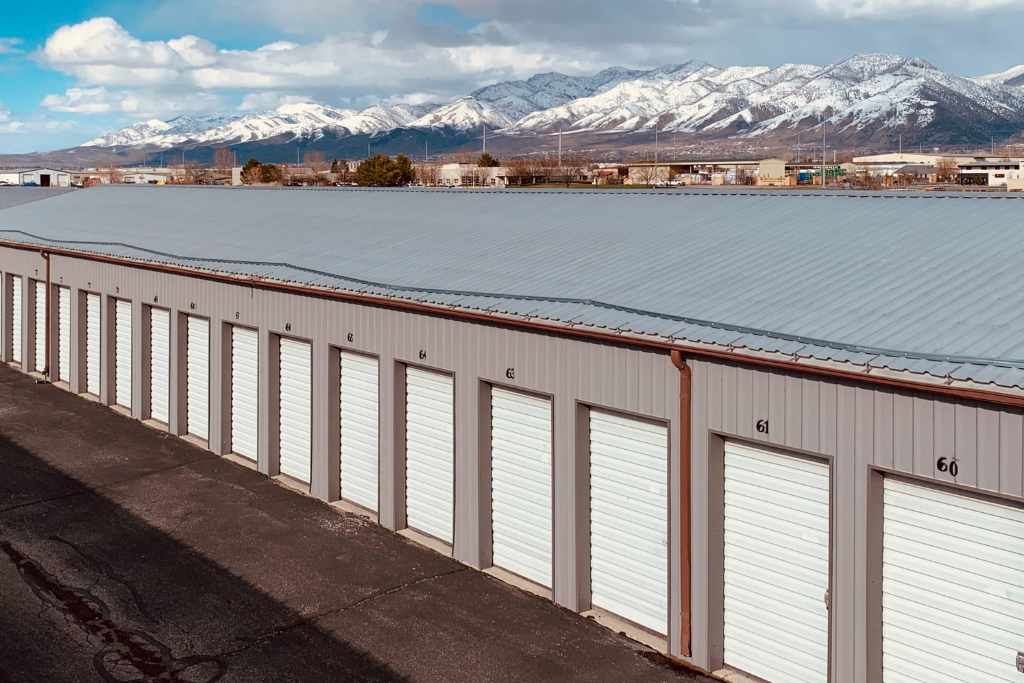Change your address in 5 minutes.
MovingWaldo offers a free centralized change of address service. Update your address with our 500 partners in a few clicks! Start now
1. Know your insurance options
When you store your stuff in a commercial self-storage facility, there’s something very important to note:
The company running the facility has no responsibility for your stuff. If the place burns down, and your stuff burns with it, the storage company’s insurance won’t pay to replace your property.
Instead, you’ll need to secure your own insurance coverage for the stuff in your storage unit.
“Storage providers will often offer you their own additional insurance coverage for the items you store,” says Stefan Tirschler, Product + Underwriting Manager at Square One Insurance Services. “This might be enough, but coverage can vary widely, and often the details of that coverage can be surprising if you haven’t taken the time to read their policy thoroughly.
“This optional coverage may also be more expensive than simply adding coverage to your existing home insurance policy.”
Thankfully, some (not all!) home insurance policies offer coverage for contents in storage; that includes homeowner, condo owner, and renter’s insurance policies.
“In the case of providers like Square One, who already include coverage for property in storage, you don’t need to pay extra at all,” says Tirschler. “And, home insurance policies can often provide very broad coverage, compared to the more restrictive coverage that you’ll find on some optional policies.”
You’ll need to consult your own home insurance policy wordings to see how your provider treats property in storage.
Get to know your home insurance policy
With so many different providers and policy options, there’s little about home insurance that’s universal—and coverage for storage units is no exception.
Most home insurance policies provide coverage for property that’s “off-premises.” That is, moveable property that’s located away from the insured address (your home). However, there are limits to such coverage and, in some cases, limits that apply specifically to storage units.
Commonly, home insurance coverage for items in storage is limited to just 30-90 days, after which time there is no coverage whatsoever. Even during the covered period, there may be extra restrictions applied to the stored stuff. For example, items in storage may not be insured against water damage, even though the policy has water damage coverage for property located in your actual home. Or, there may be a separate, smaller limit of coverage applied to stored property.
The only way to know for sure is to review your own policy wordings.
If the coverage isn’t enough for you, you can seek special storage unit insurance or—if you’re moving anyway—you can find a new home insurance policy that covers property in storage with no special limits or restrictions. For example, Square One is an insurance provider that includes such coverage in policies they sell.
Remember this too: if you’re storing any motor vehicles, like motorcycles, scooters, or ATVs, your home insurance policy won’t cover them. Instead, they’ll need to have active auto insurance while they’re in storage. Many customers ask why this is the case, and the simple answer is that home insurance policies do not cover motor vehicles – that’s what auto insurance is for.
2. Take inventory
Before you stash your stuff away, take the time to complete a full inventory of everything going into the storage unit.
“The suggestion of a home inventory does tend to make eyes roll from time to time,” says Tirschler. “But if you’ve ever lost your phone, keys or wallet…think about how frustrating it was to track down that one item, and then magnify it on a grand scale.
“Massive losses like fires are uncommon, but if someone breaks into your unit and steals a few items, will you really be able to remember everything you had in there…right down to the make, model, and even the colour?”
Your inventory should include the following information for each item in storage (especially valuable or unique items):
- A brief description, including make, model, and serial number.
- The estimated value.
- The approximate date you purchased the item.
- A photo of the item.
If you have receipts or appraisal documents, you should store copies of each along with the inventory document as well.
The inventory will help you accurately estimate the total value of your stored property. With that knowledge, you can more easily confirm that you have enough insurance coverage for all the stuff in your storage unit.
It also makes things significantly easier if you ever to have to make an insurance claim for your items in storage. With a detailed inventory, you can tell your adjuster everything they need to know to get your claim settled efficiently.
As a bonus, you’ll never find yourself wondering if something is in the storage unit or buried in a box somewhere in the basement; you can simply consult your inventory list.
Really, it’s not a bad idea to create an inventory of everything you own—not just stuff in storage.
“Times like moving are the perfect opportunity to take stock of your belongings, because you’re touching every single item in the process,” says Tirschler. “These days, writing down long lists isn’t necessary for most people – even snapping a photo of the item with your phone before you put it in the box can solve 99% of the problems that would arise if you had to try to remember your inventory after the fact.”
3. Stack and pack with care
Even if you’re set for insurance, there are certain types of damage that are unlikely to be covered by any insurance policy.
Items in storage are at risk of suffering damage from condensation or other moisture. Most home insurance policies won’t cover such damage, so it’s important to guard your stored property against it.
Stack your stuff inside the storage unit in such a way that air can flow around and through the pile. This will help moisture dry and prevent mould. Leave a gap between the walls and the things in the unit so air can circulate throughout.
If your storage unit is too full to allow adequate airflow, consider upgrading to a larger size.
The way you pack things helps too; tightly sealed boxes help keep moisture out, for one thing.
Properly packed property is also less likely to suffer damage from being dropped, squeezed, shaken, or otherwise abused. While many home insurance policies would insure accidental damage of this nature, it wouldn’t make sense to file a claim for one box of smashed dishes or a cracked monitor; small losses would probably be worth less than your policy’s deductible.
The best insurance claim is the one you never have to make—so pack and handle your stuff carefully!
4. Choose the right storage facility
All the risk prevention in the world won’t protect your storage unit if it’s located in a bad facility.
It’s worth doing a little homework before you place your property into storage. That goes double if you’re planning to store anything long-term.
Find a storage facility that features climate control. This will help mitigate potential issues with mould or moisture damage.
Check out what the storage facility’s security is like. Is it a gated facility? Do they have alarms and surveillance set up? How sturdy is the door to your storage unit? Secure facilities should have good lighting and security personnel as well.
Side note: You’ll have to provide your own lock for your storage unit, so make sure you get a sturdy one.
You also want a storage unit located away from areas at risk of flooding or other natural disasters. It may seem unlikely that you’d have to worry about such things, but large-scale natural disasters are happening more often and getting more severe as time goes on. If you’re storing your stuff long-term, you might as well make sure it’ll be safe from Mother Nature.
5. Don’t store harmful stuff
While you can’t necessarily control what happens to the storage building itself, you can control what goes inside your unit.
When you avoid storing certain dangerous goods, you’ll increase the odds that your unit will survive unharmed if the storage facility suffers a fire or other disaster. You can also rest easy knowing that your stuff won’t be in danger of getting damaged by leaking fluids or fumes.
To start with, don’t store anything flammable or explosive in your storage unit. If you’re storing lawnmowers or generators or anything else with a fuel tank, make sure to drain the fuel tank first. Propane cylinders should be similarly empty before they go into your storage unit.
If you need to store things like cleaning chemicals, cans of paint, or anything else that could possibly leak, keep them near the ground so that any escaping liquids drip harmlessly to the floor and not onto your furniture. Damage of this sort is unlikely to be covered by any insurance policy.
Your home insurance is also unlikely to cover any damage from vermin, mould, or fungi, so don’t store anything perishable in your storage unit. Rot or mould can spread throughout the unit and attract undesirables like cockroaches or mice.
You may have noticed a theme throughout these tips:
Having the right insurance is important, but never having to use it is even better. An ounce of prevention is worth a pound of cure!





